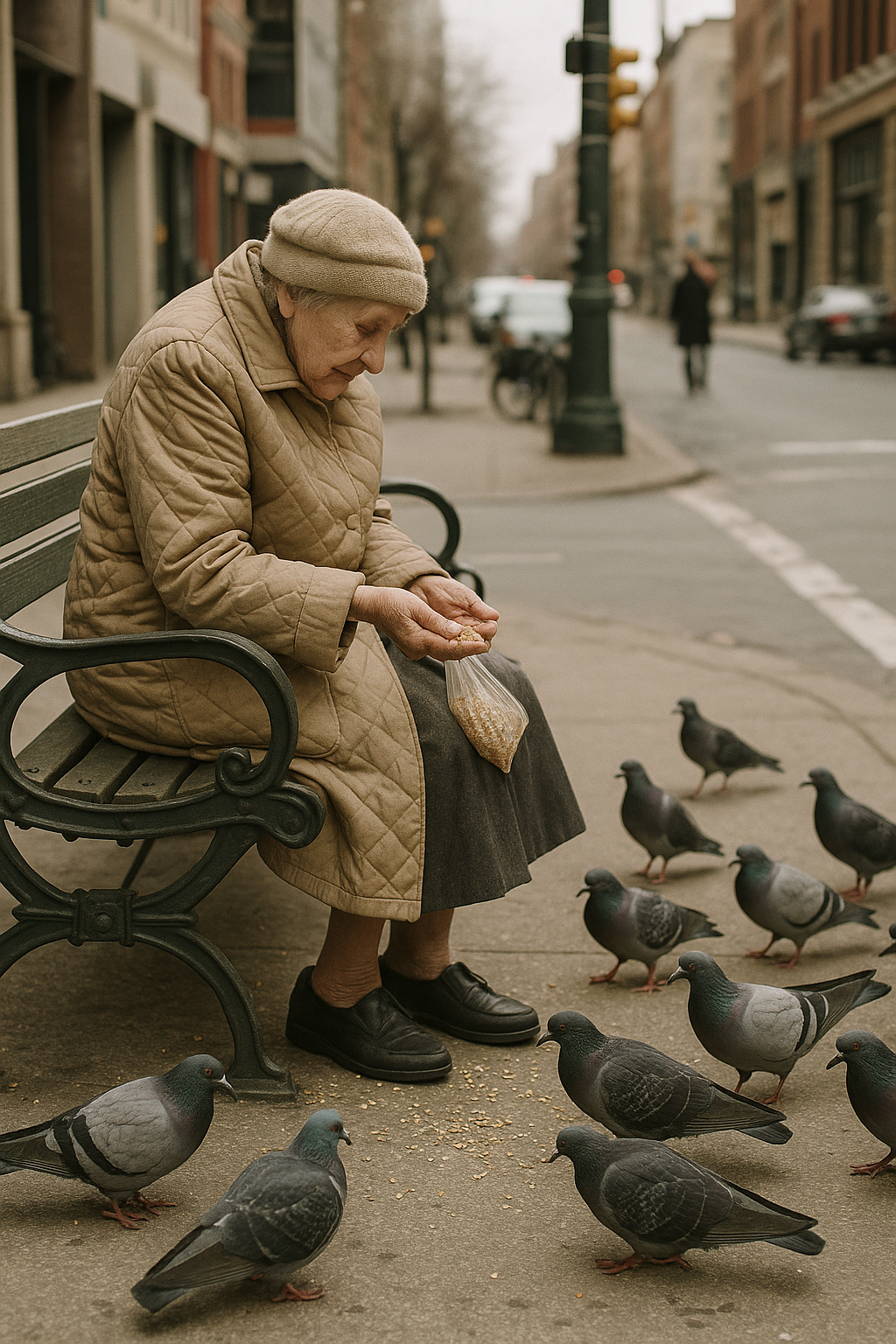
By Jenny Holly Hansen | WBN News | May 7, 2025
Whenever I walk through a city square and see pigeons fluttering at my feet, I’m reminded that these birds weren’t always treated as pests. In fact, pigeons and humans share a deep, complex history—one that tells a story of partnership, utility, and, ultimately, abandonment.
The pigeons we see today are descendants of the rock dove (Columba livia), a species that originally lived along rocky sea cliffs of Europe, North Africa, and western Asia. Thousands of years ago, humans realized these birds could be domesticated. Their ability to find their way home over long distances made them perfect for carrying messages, and their breeding habits made them a reliable source of food.
Over centuries, pigeons were bred with purpose. In ancient Egypt, they were revered for their beauty and intelligence. In Greece and Rome, they carried critical military messages across battlefields. Later, in the Middle Ages, pigeons became an essential part of communication networks, with entire castles and towns building dovecotes—special towers designed to house and protect them.
Even in modern history, pigeons served us faithfully. During both World Wars, homing pigeons played heroic roles, carrying vital intelligence across enemy lines when radio communications were unreliable or too dangerous. Some were even awarded medals for their bravery. Cher Ami, a famous World War I pigeon, saved the lives of nearly 200 soldiers by delivering a message despite being gravely injured.
But once human technology evolved—especially with the rise of telegraphy, telephones, and later, the internet—our need for pigeons disappeared almost overnight. And with that, so did our loyalty.
Pigeons that had been bred to depend on human settlements for food and shelter were left to fend for themselves. They had been so successfully domesticated that returning to life in the wild was no longer possible. Cities became their new cliffs; buildings replaced seaside rock faces. And because they lived where we lived, scavenging scraps from human activity, they became labeled as "nuisances" and "pests."
Today, pigeons are caught in an uncomfortable position: they exist in human spaces because we created them to do so, yet we largely treat them as unwelcome. Cities deploy spikes, netting, and even chemical deterrents to push them out—despite the fact that pigeons wouldn’t be here if not for the long bond we once shared.
It’s a bittersweet reflection. These birds, once trusted allies and symbols of peace and endurance, are now seen as little more than a problem to manage. And yet, pigeons continue to adapt, surviving in the concrete wilderness we’ve built around them.
When I see pigeons gathering on rooftops or pecking for crumbs along a sidewalk, I try to remember: they aren’t intruders. They’re remnants of an ancient partnership—a living memory of a time when we needed each other. Perhaps, instead of disdain, they deserve a measure of respect.
Let’s Keep Talking:
Jenny is a business insurance broker with Waypoint Insurance.
She is also a business development consultant with Impresario Partners, helping Canadian Business expand overseas.
She can be reached at 604-317-6755 or jholly-hansen@wbnn.news. Connect with Jenny on LinkedIn at https://www.linkedin.com/in/jenny-holly-hansen-365b691b/. Connect with Jenny at BlueSky: https://bsky.app/profile/jennyhollyhansen.bsky.social
Let’s Meet Up:
Jenny Holly Hansen is a cohost with Chris Sturges of the Langley Impact Networking Group. You are welcome to join us on Thursday’s from 4pm to 6pm at: Sidebar Bar and Grill: 100b - 20018 83A Avenue, Langley, BC V2Y 3R4
TAGS: #Jenny Holly Hansen #Pigeons #Vital Intelligence Carriers #Allies #Symbols of Peace and Endurance



